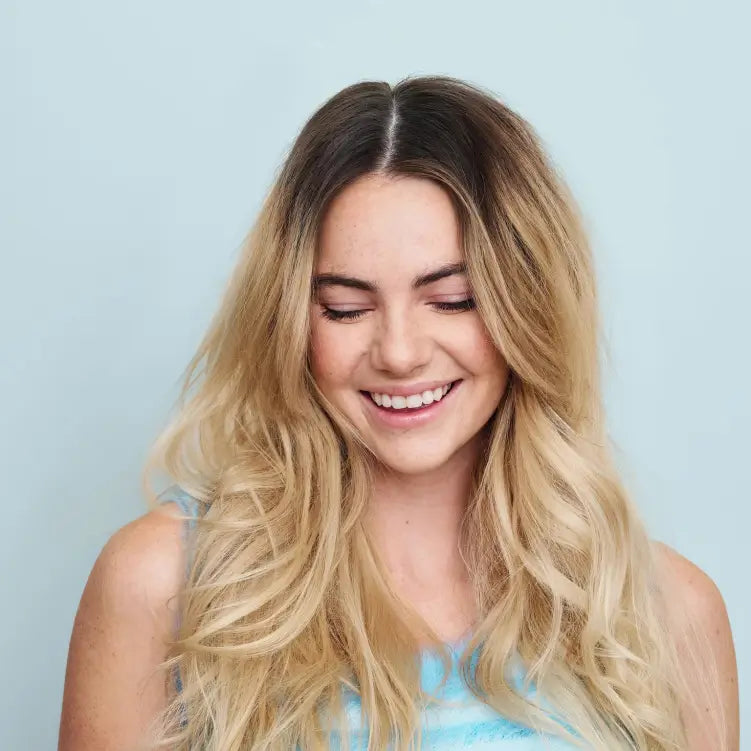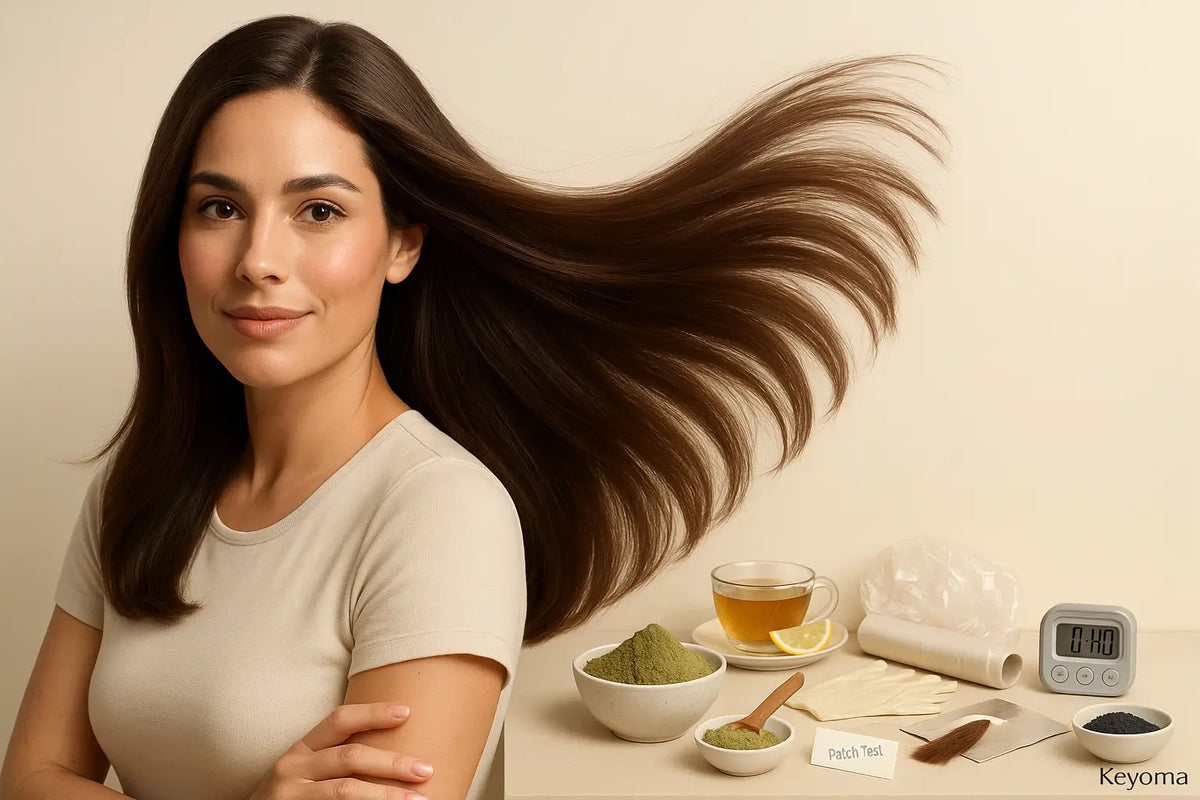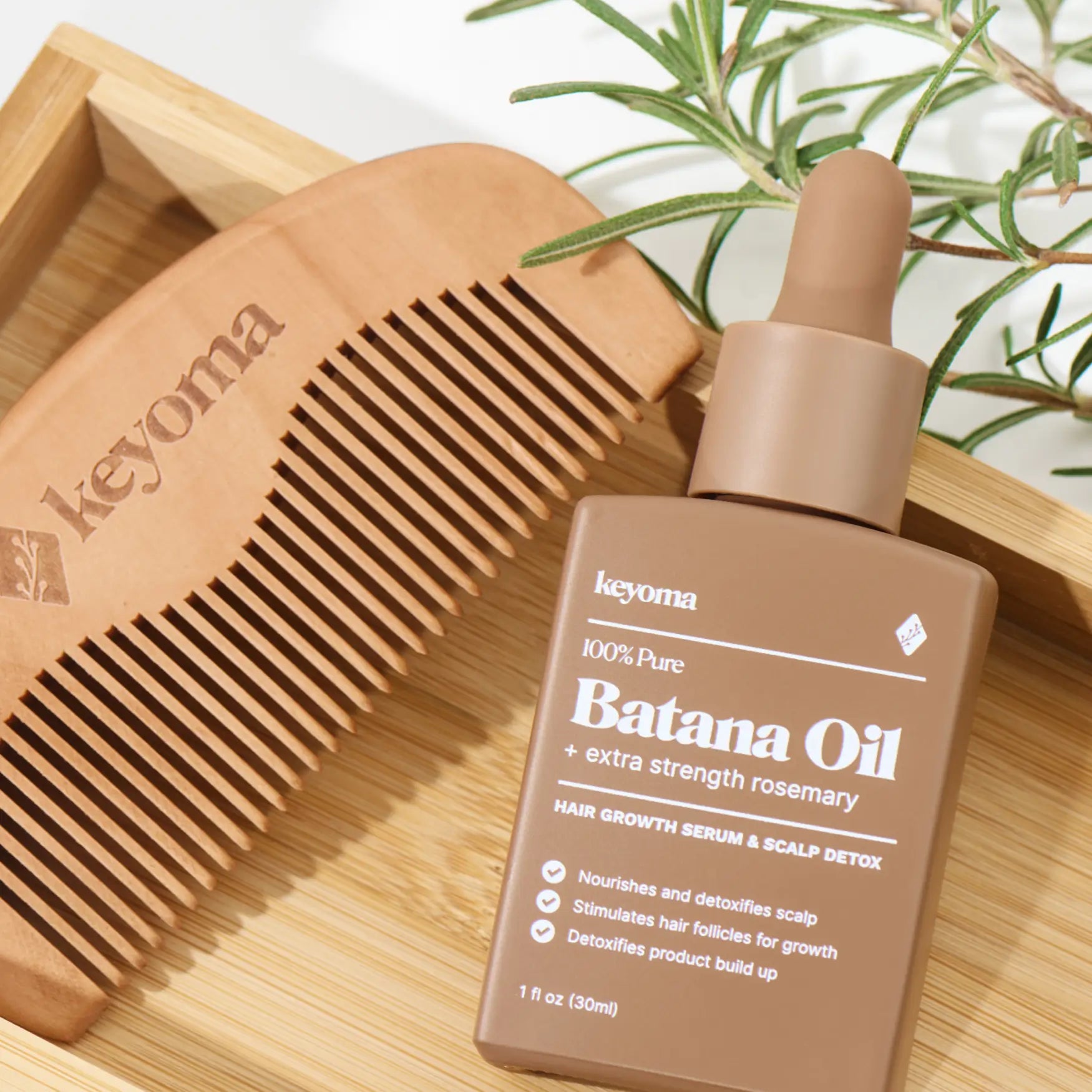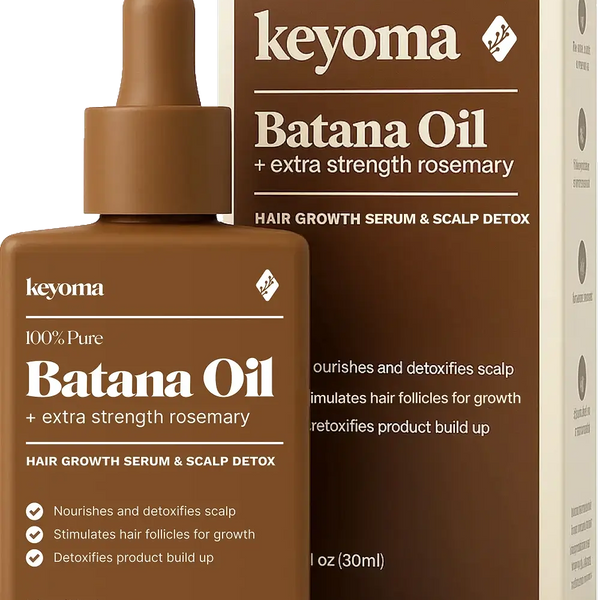In this article
Henna is best known for celebratory hand art, but it also serves hair well. Used on your strands, henna can help hair feel stronger, look shinier, and appear healthier.
It offers a plant-based option to color hair without the harsh effects of many chemical dyes. Below, you’ll find what henna does for hair, how to use it, and the possible downsides.
Key Takeaways
-
Henna naturally colors hair and can condition strands by smoothing the cuticle.
-
Natural henna stains red brown, neutral conditions without color, black mixes risk reactions.
-
Henna may soothe the scalp, reduce flakes, and balance oil and pH.
-
Use pure henna or indigo and avoid PPD additives that trigger allergies.
What is Henna?
Henna, or Lawsonia inermis, is a perennial flowering shrub used in beauty rituals for thousands of years. Though it was first cultivated in Asia and around the Mediterranean, it now grows in many tropical and semi-arid climates worldwide.
Dried henna leaves are milled into a fine powder. When mixed with water or other natural add-ins, the paste releases a green to reddish-brown dye that can tint skin or hair.
Records show henna use going back roughly 9,000 years in ancient Egypt. Historical accounts suggest Cleopatra used henna for body adornment, and Egyptians applied it to the nails of mummies before burial.
Today, henna appears across the globe for body art, wedding customs, hair coloring, decoration, some traditional skin applications, and more.
How Henna Is Used Culturally
Applying henna to skin and hair is deeply rooted in South and Central Asian traditions. Its earliest documented use stretches back to Egyptian pharaohs, including in mummification practices. In many Muslim communities, men also dye beards with henna.
A lasting custom is its role in weddings, where intricate henna designs decorate hands and feet.
During pre-wedding festivities, a special mehndi day is set aside for the art. Women from the bridal party sing and dance while the bride’s hands are carefully adorned.
Using Henna for Hair Care
Henna naturally dyes hair, but its benefits extend beyond color alone. It can support hair growth, condition strands, and promote a happier scalp. If you want a nourishing alternative to conventional dye, henna can fit that need.
You’ll typically see three categories of henna for hair: natural, neutral, and black.
Natural Henna
Natural, or red henna, imparts a deep red-brown stain that often deepens over a couple of days. This is pure henna, unlike other types that may blend in additional plants or dyes. Choose natural henna if you want a chemical-free coloring method.
Neutral Henna
Neutral henna won’t add color. It usually isn’t true henna at all, but Senna Italica, and it works as a botanical conditioner without changing your shade.
Black Henna
Black henna comes from indigo and may include other dyes or additives like PPD (para-phenylenediamine). These mixes can trigger serious reactions and even scarring if left on for 2–3 days. Skip black henna in beauty use. For a dark result, opt for pure indigo powder instead.
Benefits of Henna for Healthy Hair
Once you’ve picked a safe, plant-only powder and skipped PPD mixes, shift from types to outcomes. A simple tweak from this method: mix the paste with yogurt or egg to boost that conditioned feel. Now weigh what matters for your routine. Review henna’s key upsides.

1. Improves Scalp Comfort and Condition
Henna can be soothing for the scalp and help it feel more comfortable. Its cooling qualities, along with antimicrobial and antifungal activity, may support a healthier scalp environment. If itchiness is an issue, henna applications can feel relieving and may help limit irritation.
2. Conditions and Smooths Hair
Used as a paste, henna acts like a botanical conditioner. It can help mend the look of damage along the hair shaft. By smoothing and sealing the cuticle, henna helps hair hold on to moisture.
Mix-ins such as yoghurt or egg can boost that moisturizing feel. They may also improve strength and elasticity so strands are less prone to snapping, which can cut down on split ends while hair gradually looks better.
3. Supports Hair Growth
Many people find henna supports a scalp setting where follicles can thrive. With happier follicles, shedding may lessen and the growth rate may appear to improve.
4. Helps Prevent Dandruff
Henna can help lift extra oil and buildup from the scalp. With regular use, flakes may be reduced and kept from returning. A paste made with methi seeds, henna, and mustard oil is often used to keep dandruff under control.
5. Helps Balance Oil and Scalp pH
For oily scalps, henna can be a helpful choice. It may regulate overactive sebaceous glands and help bring your scalp’s acid-alkaline, or pH, closer to its natural state. That balance supports healthier follicles.
6. Helps Counter Oxidative Stress
When free radicals outweigh defenses, oxidative stress can develop. Besides affecting the body, it can show up in hair as damage, breakage, thinning, or early grays. Because henna has antioxidant activity, it may help counter some of that stress.
7. Helps Protect Natural Hair Color
While often used as a dye, good-quality henna can also enhance the look of your natural pigment. It may reduce the appearance of premature greying and make hair look fuller and more lustrous.
8. Softens Hair
With its nourishing compounds, henna can soften hair that feels dry, damaged, or dull. After applications, strands often feel smoother and easier to manage.
Side Effects and Precautions
Choose 100% organic henna whenever possible. Many commercial powders include strong chemicals like PPD (Paraphenylenediamine) to intensify color. These additives can cause the following issues:
Paraphenylenediamine is a known allergen and can provoke reactions on contact. You might not react initially, but repeated exposure increases the chance of sensitivity over time.
Added chemicals can be very drying. They may overprocess hair so it feels rough, brittle, and hard to manage, which can lead to breakage and poor texture.
If henna gets in your eyes, it can cause redness, irritation, tearing, and itch. Rinse with cool water right away, and see an eye specialist if symptoms don’t settle.
How to Apply Henna to Hair

Most henna comes as a dry powder that you mix with water and optional add-ins, then apply to clean, dry hair. For best results, keep it on for at least 2–3 hours. I noticed a slightly richer stain when I kept the paste warm. Here’s a step-by-step to use henna on hair:
-
Drape an old towel or sheet over your shoulders to avoid stains, and wear gloves.
-
Begin at the crown, take small sections, and brush the henna on. Be sure to coat the scalp as well.
-
Clip sections up as you move along so everything stays neat.
-
After application, cover with a shower cap or plastic wrap.
-
Leave on for 4–5 hours or overnight to deepen the colour.
-
Daytime application is ideal; sit in the sun or under a dryer to help the dye penetrate.
-
Rinse thoroughly with cool water until the water runs clear.
-
Skip shampoo right away. Allow the colour to oxidize for 24 hours, then wash.
-
Blot with a towel and let hair air-dry.
Henna vs. Chemical Hair Dyes and Why Choose Henna?
Compared with conventional dyes, henna has several advantages:
Natural and Safe: Where chemical dyes often contain ammonia, peroxide, and parabens, henna is plant-based and can nourish rather than strip hair.
Hypoallergenic: It’s less likely to cause irritation or reactions, which can suit people with sensitive skin.
No Fading Roots: Henna softens gradually as it fades, so stark root lines are less of a concern than with many chemical dyes.
Environmentally Friendly: Henna is biodegradable and free of the harsh substances that can pollute soil and water, making it a greener pick.
Discover Safe Hair Care Routine With Keyoma
Treat henna like three different tools, not one. Natural henna colors red-brown. “Neutral henna” is usually senna and conditions without changing shade. “Black henna” often hides PPD, which can cause severe reactions and even scarring; choose pure indigo instead for dark tones.
If a label lists PPD or multiple dye additives, skip it—those mixes can be drying and leave hair rough. Choose 100% organic, single-ingredient powders to lower allergy risk and keep texture smoother. Keep paste away from eyes and rinse with cool water if contact happens.
If you want color that softens as it fades rather than exposing hard root lines, henna fits that brief. For clean-label checklists, safer dye swaps, and routine maps, visit the Keyoma Hair Care blog.
Featured Product
100% Pure Batana Oil + Rosemary









